Your car’s tie rod is being used whenever you turn the steering wheel. Without the tie rod, you can’t control which way your vehicle goes. If you want to have a smooth ride, your tie rod needs to be in good shape.
Your car’s tie rod is connected to the front wheels of your car. It is an important part of the car’s steering system. Tie rods have two components: the inner tie rod and the tie rod end.
When the tie rod and the tie rod ends are in good condition, you will have responsive steering and a smooth ride.
You won’t be able to steer your car or truck even if just one tie rod is broken. The tie rod end is so important that your chances of getting into a serious car accident will be high if it breaks while driving.
Bad tie rod symptoms include:
- Uneven Tire Wear
- Unresponsive Steering
- Misaligned Wheels
- Clunking Noise
- Loose Wheels When You Jack the Car Up
When do you need a tie rod replacement? If you notice the sudden development of problems such as a shaking steering wheel or rattling noises on the front wheels, the tie rods or the tie rod ends may need to be replaced. So have them both checked by a car mechanic.
Read on to learn more about tie rods, why they are important, signs of them going bad, when to replace the tie rods or the tie rod ends, how to replace them, and the cost of replacing them.
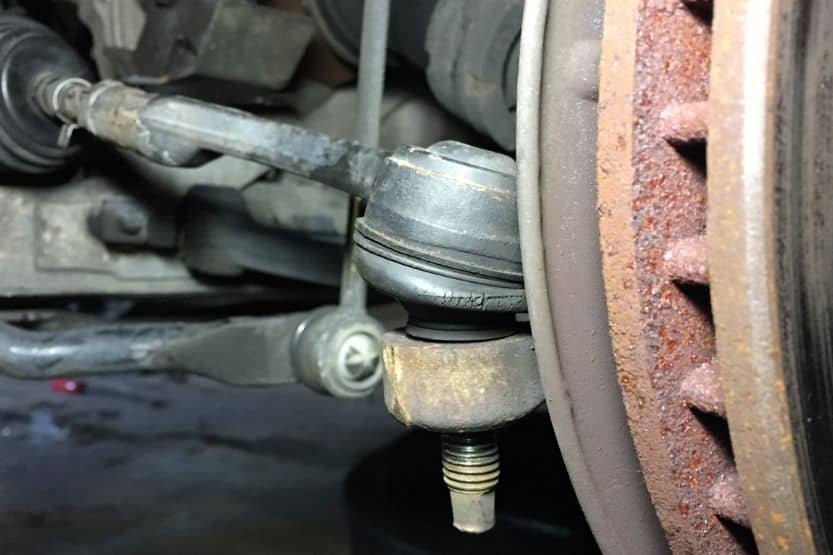
What Is a Tie Rod?
The tie rod connects or ‘ties’ the rack and pinion gear or steering gear to the wheel through a rod of a certain length. This rod has a ball socket on one end. As the wheel turns or moves up and down according to the road’s surface, the ball socket controls the wheel’s movements.
The greased ball joints allow the transmission of rotational forces through the steering system.
Tie Rod Design
The majority of the designs in steering systems have an inner tie rod attached to the steering gear. This inner tie rod is also connected to the wheel assembly through an outer tie rod end. The inner tie rod and the outer tie rod ends are threaded to each other.
That means one has a male thread, and the other has a female thread. The length of the thread is adjustable when correcting and setting the front wheel alignment of the car.
The inner tie rod end and the outer end of modern cars have both greases. The inner tie rod end has a steering rack boot, while the outer end has a plastic or small rubber boot as protection. Greasing is crucial as both encounter friction and therefore susceptible to wear and tear.
The rubber or plastic boot can crack over time, allowing moisture to creep in and cause corrosion. As the tie rod ends and the tie rods wear out, there’s a risk of degrading car handling. You may hear disturbing clunking noises and feel slight vibrations on the wheel.
Why Is a Tie Rod Important?
Your car’s tie rod is an important part of its steering system. It has two components, namely, the inner tie rod and the tie rod end. Having a responsive tie rod will give you responsive steering and a smooth ride.
If you have a broken tie rod, you won’t be able to drive your car. That’s how important it is. So, you should be aware of its role in the efficient and safe operation of your car.
The car engine might be in excellent running condition, and the brakes are functioning very well, but if your steering system is faulty, it is dangerous to drive your car. You might run into a serious car accident.
Enables Precise and Smooth Steering
Your car’s tie rod has a connection with the two front wheels of your car. It enables precise and smooth steering. Replace your tie rod immediately when your mechanic says so.
It is very dangerous to drive a car with a damaged tie rod. The worst thing that can happen is one of your front wheels can break free from the steering assembly. You will lose your ability to steer the car, and your car will go wherever its initial momentum will take it.
A Faulty Tie Rod Is Equal to a Failing Steering System
At the first sign of wear and tear on the tie rods, your car becomes unsafe to drive because the steering system is at risk of failing. That’s how important it is for you to check your car’s tie rods regularly.
Bad Tie Rod Symptoms
Before the tie rods stop working, you will likely feel, hear and see some of the signs that they are weakening.
Below are some of the most common bad tie rod symptoms:
- Uneven Tire Wear
- Unresponsive Steering
- Misaligned Wheels
- Clunking Noise
- Loose Wheels When You Jack the Car Up
1. Uneven Tire Wear
If you notice that there is uneven wear on your car’s tires, where one side is more worn out than the other, your tie rod could be the culprit. With proper steering and suspension adjustment, your car’s weight will bring weight equally on four tires.
Therefore, the wearing of the four tires will be even, and they also will last longer. But if the tire wear is uneven, check your tie rods.
2. Unresponsive Steering
If you notice some ‘play’ in the steering wheel, it could be a sign of a failing tie rod. You won’t have total control of the steering. Your car’s tie rods and tie rod ends need to be checked.
One of the best indications that your tie rods are failing is experiencing reduced handling performance. A good sign of a fully working steering system is if it is very responsive and tight.
If it is not, one of the first things you need to check is the tie rods. They are the most common cause of this problem.
3. Misaligned Wheels
Unusual tire wear is indicative of misaligned car wheels, and misalignment of wheels is indicative of faulty tie rods. In other words, all these things correlate. Tie rods help to track and steer straight if the steering wheel is rightly centered.
But if the tie rod is faulty, tire wheels will become misaligned. Once that happens, you will have a shaking steering wheel.
Moreover, your car will pull or go to one side when you don’t want it to, and you will be forced to make steering corrections constantly. This will get you easily tired behind the wheels.
4. Clunking Noise
Rattling and clunking sounds will emit underneath your car’s front section if your tie rod is broken. You will hear these troubling strange noises while turning your car at low speeds. The sounds are caused by tie rods that are beginning to wear out.
When tie rods start to wear, the tie rod ends tend to come loose from their sockets and begin to rattle around at their linkages and joints. Over time, the rubber or plastic boots that hold the grease crack or get torn.
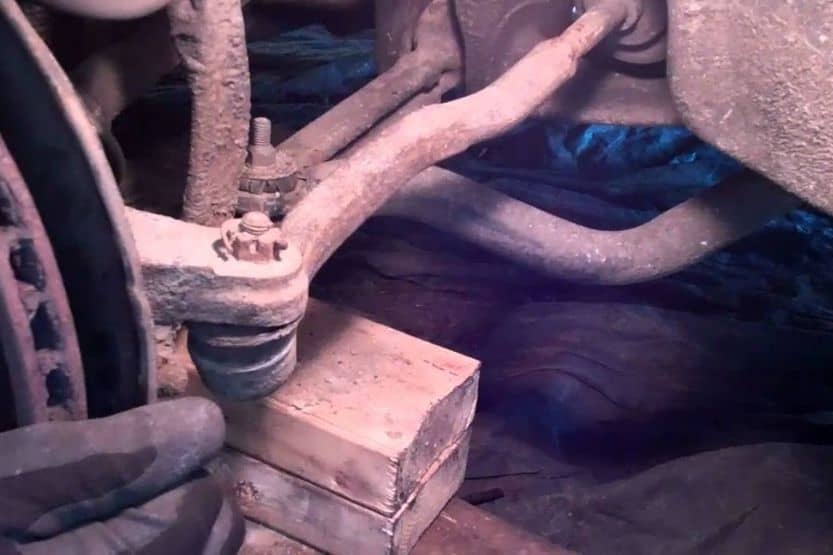
This will allow dirt, sand, and other debris to creep into the joints. In time, the dirt will displace the grease, and the sockets will get dry. When that happens, dirt and dust will emit grinding sounds when they get in contact with the metal as you steer your car.
5. Loose Wheels When You Jack the Car Up
If you have a jack, use it to lift the front end of your car. Then grab one of the front tires by placing your hands at the 3 and 9 o’clock positions. Shake the wheel from side to side. Then put your hands on the 12 and 6 o’clock positions on the tire. Shake the wheel up and down.
If the tie rods are failing, one of the wheels or even both wheels will produce a clicking noise or shift slightly as you try to move it. It could mean the tie rods or some of the connected parts are worn out.
When Do You Need to Replace the Tie Rod?
The most common issues with tie rods are wear and tear, getting loose, and pulling on one side while driving. If any of these symptoms show up, you have to have your car’s tie rods checked immediately. It is most probable that the mechanic will advise you to replace them right away.
The outer tie rod ends are usually the ones that fail often. Tie rod problems are also most common on SUVs and bigger cars. These vehicles often carry much heavier loads. That situation gives the tie rod, and the tie rod ends more work and more stress.
An accident can cause the tie rods of your car to break or malfunction. The culprit is not always normal wear and tear. If you hit a big curb or a pothole, it can damage the tie rods. Check the performance of your steering system if this happened to you.
Also, have the tie rod ends checked by a competent car mechanic if you notice the sudden development of problems, such as a shaking steering wheel or rattling noises on the front wheels.
Tie Rod Replacement Cost
It is not too costly to replace tie rods and tie rod ends. On average, it will cost somewhere between $100 and $400 replacement parts and labor included. It all depends on the type of vehicle, the quality of the replacement parts, and how difficult it will replace the broken parts.
The costs also depend on the following:
1. Inner Tie Rods Are More Expensive
Tie rod replacement can cost from $40 to $120. Inner tie rods are usually more costly than the outers. Some cars have the inner and the outer parts sold as an assembly. Labor costs will depend on the difficulty of doing the job. But they average more or less between $145 and $185.
Tie rod replacement cost will be higher if the job requires replacing the inner tie rod ends. It would take a bit more effort to get the damaged ones removed and replaced.
2. Location
The total cost will also depend on the location. There are states and areas where labor costs are cheaper. If you live in such an area, your labor costs might be lower than the average. On average, the total labor cost of tie rods and tie rod ends is around 50% of the total cost of labor and materials.
You need to maximize the value of this labor cost by getting OEM parts than imitation parts. Original spare parts are more durable and up to standards than cheaper parts that are often weak, not fully according to specs, and don’t last as long.
When you have the tie rods and tie rod ends of your car replaced, you will also need your front wheels aligned. In other words, you have to add wheel alignment to your total cost as well. The average cost of this tire service ranges from $80 to $100.
3. Service Shop
To get the best value for the price, you need to shop around before deciding which car repair shop will do the job. For sure, you will find a cheaper car service shop that will do as great a job as a more expensive one.
How to Replace Tie Rods
Below is a video that will show you how to replace a tie rod and a tie rod end. This video includes the step-by-step method in an obvious way, so if you want to, you can do it yourself. It also shows how to use the tools for the job.
Tie Rod Replacement Tools
To facilitate tie rod replacement, mechanics at car service shops use a tie rod removal tool. One of the tools that they use for this purpose is the OEMTOOLS 27178 Master Inner Tie Rod Tool Set:
Click here to see it on Amazon.
However, most car service shops choose to have inner tie rod toolsets because they can use them for different tie rod assemblies. A popular tie rod toolset is the Lisle 46800 Master Inner Tie Rod Tool Set:
Click here to see it on Amazon.
To make the job of removing tie rods easier and faster, car mechanics also use a tie rod puller, like the OTC (7503) Tie Rod/inner bearing race puller Remover:
Click here to see it on Amazon.
If you are experienced in repairing cars and trucks, you can also use these tools to replace worn-out tie rods and tie rod ends.
Tie Rod Care and Maintenance
Do you need preventive maintenance on your car’s tie rods? It depends on the tie rods’ type, and the tie rod ends that your vehicle is fitted with. There are cars and trucks with tie rod ends that have grease fittings.
If you have this type of car or truck, you need to grease the tie rod ends periodically.
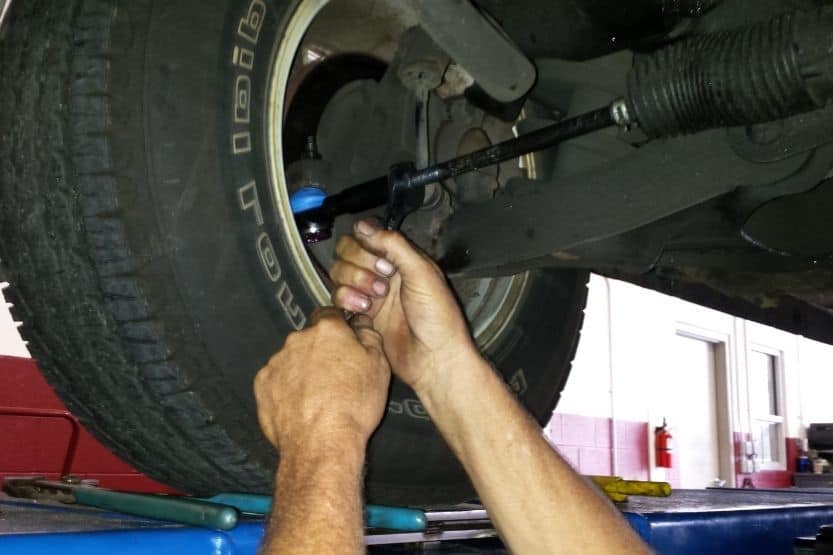
There are modern cars that don’t require tie rod end maintenance. The tie rod ends of these cars are completely sealed and filled with grease at the factory.
To be sure if your car is such, check the owner’s manual. You can also ask a mechanic to check it on your regular car service schedule.
Conclusion: Tie Rod End – Inner and Outer Tie Rod Replacement
The tie rod is a critical part of your car or truck’s steering system. It is connected to the two front wheels of your car. There are two components in tie rods: the inner tie rod and the tie rod end.
Bad tie rod symptoms include:
- Uneven Tire Wear
- Unresponsive Steering
- Wheels Are Not Properly Aligned
- Clunking Noise
- Loose Wheels When You Jack the Car Up
When do you need a tie rod replacement? If you notice the sudden development of problems such as a shaking steering wheel or rattling noises on the front wheels, have the tie rod ends checked by a competent car mechanic.
If the tie rod and the tie rod ends of your car are in good condition, you will experience responsive and precise steering. Consequently, your ride will also be smooth and fluid.
Related reading:
Rod Bearing [What is It, How to Replace It, and Replacement Cost]





![Rod Bearing [What is It, How to Replace It, and Replacement Cost] rod bearing](https://roadsumo.com/wp-content/uploads/2021/05/rod-bearing-150x150.jpeg)
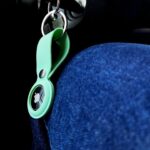
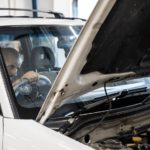
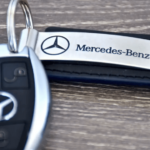
![Nissan Key Fob Battery Replacement – [How to Change It?] nissan key fob battery replacement](https://roadsumo.com/wp-content/uploads/2022/11/Nissan-key-fob-battery-replacement-150x150.jpg)
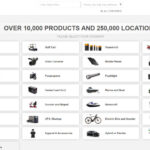
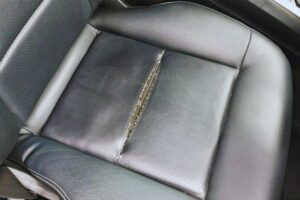
![Read more about the article Maaco Review [Is It Good? Why Is It Cheap?]](https://roadsumo.com/wp-content/uploads/2022/04/Maaco-review-300x200.jpg)
![Read more about the article Maaco Paint Job Cost [How Much Is It?]](https://roadsumo.com/wp-content/uploads/2022/01/Maaco-paint-job-cost-300x200.jpg)